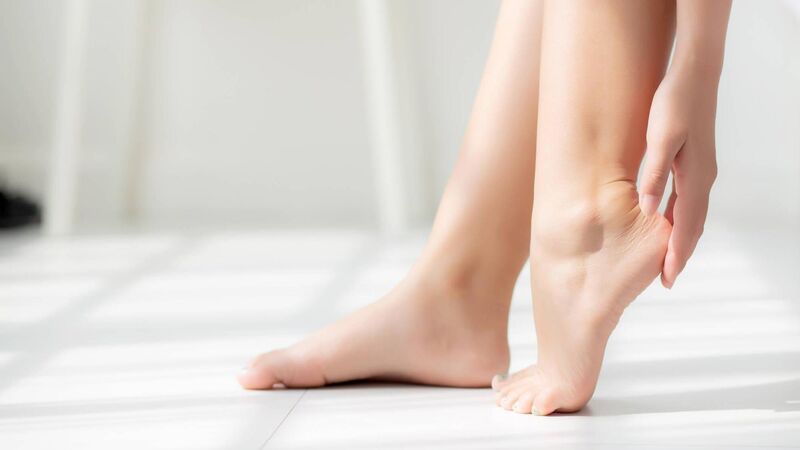Dr Phil Kieran: Could stabbing pain in her heels be plantar fasciitis?

If the pain is confined to one foot, I would check for any hard or cracked skin on the heel, which can cause pain, or a small flat wart (verruca) that can also cause pain when a person is standing.
Foot pain is a problem we often see in general practice and can be due to a wide array of causes. Plantar fasciitis is a fairly common condition, which is why people often hear about it.
In your daughter’s case, I would first rule out other causes.
If the pain is confined to one foot, I would check for any hard or cracked skin on the heel, which can cause pain, or a small flat wart (verruca) that can also cause pain when a person is standing.
If the skin looks normal, it is a good idea to see if her ankle is sore along her Achilles tendon. This tendon connects the calf muscles to the back of the heel bone or calcaneus. It can be put under increased strain when you are standing on tiptoe, which is the position high heels encourage.
Frequently alternating between high heels and very flat shoes can cause the calf muscles or the Achilles tendon to become sore.
If the pain is mainly in the underside of the heel pad and particularly intense first thing in the morning, then plantar fasciitis is the most likely culprit.
The plantar fascia is a fibrous tissue that covers the underside of the foot. It stretches from the front of the heel bone to approximately the ball of the foot, where the toes start. The tissue can become inflamed and sore, particularly if it is overstretched.
Walking barefoot on hard surfaces or wearing footwear that provides little to no support to the area can exacerbate the condition.
If we are happy that this is plantar fasciitis, the first thing we do is advise wearing comfortable, supportive footwear until the pain fully resolves. This would rule out wearing flip flops or high heels. It also means not going barefoot, particularly if you have wood or tiled floors. I would usually recommend patients to consider getting a soft insole to cushion their heel, if it is particularly sore.
Your daughter could also try rolling a tennis ball or a water bottle under her foot. This action can gently stretch the fibres of the plantar fascia, but, for many, it mainly provides symptom relief while the condition is settling down. Some people freeze the water bottle as the cold can also give some pain relief.
In most cases, by following the advice above, plantar fasciitis will settle down between three weeks and three months.
In a very small number of cases, it doesn’t, so then it is worth going to see your GP for further advice and treatment.
- If you have a question for Dr Phil Kieran, please send it to parenting@examiner.ie










